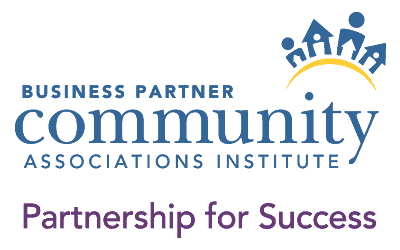Should Your HOA Send Emails? + 10 Examples!
In today’s digital landscape, there is no shortage of tools to keep your residents informed. With emerging communication tools such as text messaging and resident portals, is email still worthwhile for your HOA? In this post, you’ll learn about the power of email and 10 ways to use it in your community.
Why email is a powerful tool for your HOA
- More Reach – According to Statista, 90% of individuals in the United States over the age of 18 have an email address, which makes it a convenient and easy way to communicate. Worldwide, email is set to grow to 4.6 billion users, which is more than half of the world’s population.
- Nonintrusive – Email is a non-intrusive means of communication by nature. It doesn’t disrupt your resident’s daily routine like phone calls or social media does. While emails are not ideal in emergency situations, it is still a great tool for notices, reminders, and creating conversations with residents.
- Diverse – Emails come in all lengths. It can be as short as a work order notification or as long and engaging as a community newsletter. Email gives your community a lot of flexibility to get the word out. As you’ll learn in this post, there are many ways your HOA can get creative with email.
- Quick – Mass emails can be sent out within minutes through an HOA communication tool.
10 Ways to Use Email in Your HOA
1) Introduce your community
Introducing your community is a great way to start building stronger relationships with your residents. A welcome message helps you to achieve that. We recommend you include the following:
- As a board or manager, introduce yourself and your team as a point of contact.
- Let the resident know where they can find information about the community. If you have a portal or website, include a short list of what residents can do, like make payments online or view documents.
- Set expectations on how frequently you’ll communicate with residents and on what topics.
- Encourage residents to log in and let you know how they want to be contacted – method (phone, email, and text) and language.
2) Notices and reminders
Notices and reminder emails are an essential way to keep your residents informed of important things or changes happening in the community. Here are some of the most common types of emails:
- Maintenance Alerts – Includes any water shut-offs, construction, equipment installation, testing (i.e. alarm), or equipment outage (i.e. elevator not working).
- Amenities – Any changes to an amenity’s hours of operation or reminders about amenity use policies.
- Payments – Notify residents when payments are due or send out a late payment notice.
- CC&R – Any changes to the community’s rules and regulations.
- Documents – When you’ve posted a new file in the document library, send an automated email to residents letting them know about it.
3) Responses to resident requests
As a Board member or manager, it’s likely that you’re often overwhelmed with phone calls from residents asking a question or requesting a work order. Encouraging your residents to submit requests through a system not only helps you to track their requests but also keeps your residents in the loop. For example, when a resident submits a work order, you can notify residents by email of the progress. Using email to communicate to your residents about their requests is a great way to increase satisfaction while reducing inbound calls to the office.
4) Community Newsletter
An e-newsletter keeps your residents connected by sharing upcoming events and putting a spotlight on your community’s achievements. Here are some ideas for you to build your own newsletter:
- Past events with a link to photos
- Upcoming events and why residents should attend
- Social causes the community supports and the impact it’ll have
- Big decisions the community has made during Board meetings to inform residents about.
- New community improvements or restoration projects.
- Resident spotlight if your residents have any exciting news or achievements they want to share.
5) Educate your residents about the community
Some residents may be familiar with how HOAs function while others may be brand new to it. Either way, educating residents about the community’s policies improves their understanding of it. When residents understand how or why a community functions in a certain way, it paves the way for more harmony and less friction. Consider these tips on how you can educate your residents:
- Rules and regulations – If a rule is being broken more often, let your residents know why the rule is in place and how to stay in compliance.
- Preparing for inclement weather – Educate your residents on how to stay safe during inclement weather. Examples include:
- How to prepare a safety kit
- Evacuation information and routes.
- Local resources and emergency contact information.
- Tips for improving property values – Give residents simple tips on maintaining their property that improves values while staying in compliance with the CC&Rs.
- Using the community’s technology – If you are using a resident portal or website, explain how it benefits residents and provide tips to use it. Examples include:
- “Did you know you can submit a work order request online?”
- “Our community now has a resident directory and here’s how to use it.”
6) Community Events
Events are a great way to build a sense of community in your HOA. When sending an email about the upcoming board meeting or trivia night, you should describe what the event is about and why residents should attend.
7) Board Meeting communications
When you communicate with residents about Board Meetings, it increases participation and improves the quorum for your annual meeting. Here are a few ways you can keep residents in the loop about Board Meetings:
- Meeting Invites – Set a time, date, and location (virtual or in-person) for the meeting.
- Calendar – Provide an online calendar and send notifications in advance of meetings so residents can plan to attend.
- Annual Notices – Notify residents in advance of the annual meeting about issues the community will be discussing and voting on.
- Agendas – Let residents know what is on the agenda for discussion.
- Post-Meeting Notice – Highlight any decisions made and how it impacts residents.
8) Recruit Volunteers
When you’re looking for volunteers to be part of a new committee (ARC committee, Social Events committee) or to take on a specific community role (website admin, lifeguard), email can be a great recruitment tool. In your email, describe what role(s) the community is looking to fulfill, any experience that is helpful or necessary, and the volunteer’s job functions.
9) Safety information
In an emergency, communicating through a combination of text, phone, and email is vital. For general updates to safety protocols, email is valuable because it keeps residents informed or reminded of certain policies. Let’s cover a few examples:
- Scams – If residents are receiving scam messages about payment, you can use email to increase awareness of it.
- Maintenance – If a certain area is blocked off due to construction, email residents to let them know and offer an alternative route.
- Safety Protocols – Notify residents when you are conducting a safety drill to prepare them for emergencies.
- COVID-Related – During the pandemic, managers would inform residents of any safety policies related to amenities, inspections, etc.
10) Calls for Resident Feedback
Conducting regular surveys helps you to understand how satisfied residents are with the community management or what they are interested in. It also improves resident satisfaction because they will feel like they are being heard. Before your next board meeting, create a survey and email your residents asking for their concerns, questions, or suggestions. You can also refer your residents to their resident portal to fill out the survey.
How Pilera’s HOA Email feature can improve your community engagement
Many communities are outgrowing generic email systems, which require hours of manual work to maintain recipient lists, create content, and send mass emails. An HOA email platform takes out the manual work and streamlines the process from list management to delivery.
Pilera offers a comprehensive email platform that is specifically built for HOAs, making it easier to sync resident data, manage lists, create templates, and automate emails at scale. Here’s how you can take your communication to the next level with Pilera’s HOA email platform:
- Distribution Groups – Create message groups using a combination of street, building, floor, units, and residents. Also, the distribution groups are self-maintaining as residents move in and out of the community.
- Automated Email Notifications – Keep residents in the loop about their support requests, work orders, violations, and ACRs with automated email notifications.
- Marketing Emails – Design professional, beautiful marketing emails through an easy-to-use rich text editor.
- Preferences – Residents can choose from 100+ languages to receive emails in.
- Branding – Improve awareness with your community’s logo and colors on your email.
- Advanced Scheduling – Stay ahead by scheduling your email up to two weeks in advance down to just a few minutes.
- Multi-Community Announcements – Management companies handling the communications for many communities can send emails to all of them at once.
- Delivery Analytics – See whether an email was delivered, opened, clicked, or bounced.
Conclusion: Creating a sense of community with email
With so many ways to connect with your residents, email continues to be a powerful tool for HOAs. Its reach, speed, and diversity make email a great choice to keep your residents informed, safe, and engaged. It can be used for sending short, concise emails such as notices and reminders. It’s also diverse enough to send newsletter-type emails that help build a sense of community. Give email a try in your community today to increase resident satisfaction and improve operations with fewer calls to the office.
About Pilera
Pilera Software is the premier community and property management software that has helped thousands of community managers and back-office personnel enhance communications, improve customer service, and manage compliance and operations. To learn how Pilera Communications can help to improve your staff efficiency and reduce costs, book a personalized demo or you can also write to us at [email protected].



